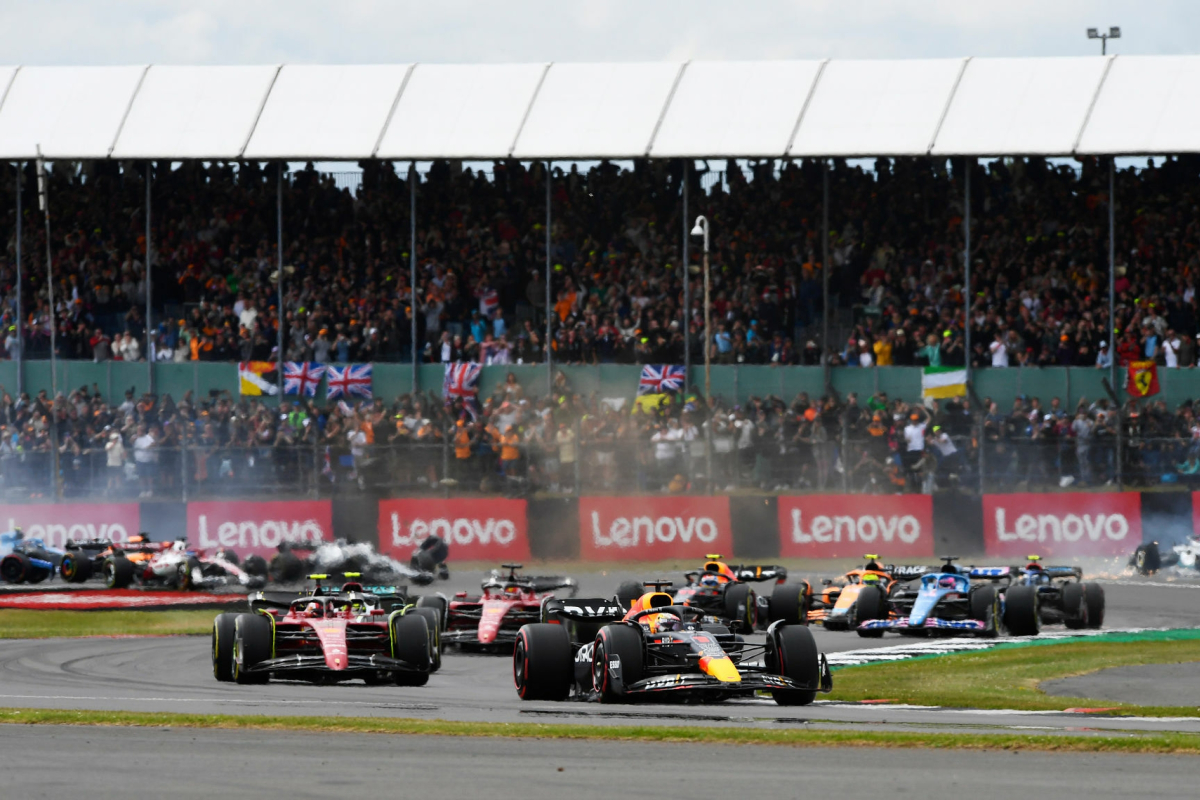The 107% rule ensures safety and competitiveness during Formula 1 races and while uncommon to see applied, has been used on multiple occasions.
One of the lesser-known rules in the sport is the 107% rule, which determines whether a driver is allowed to compete in a race.
Introduced back in 1996, the 107% rule ensures that slow cars, which could pose a danger to others on track, don't start the race.
Although the majority of cars meet the 107% rule nowadays, it remains a potential hurdle for new teams joining the grid.
So, what exactly is the 107% rule and how is it calculated? Let's find out.
What is the 107% rule in F1?
Simply put, the 107% rule was introduced to ensure that each car or driver is fast enough to compete in Sunday's race.
The reason for this is to prevent dangerous situations that could arise from having cars with vastly different speeds on the track, especially in situations when slower cars are lapped by faster ones.
But how fast is "fast enough"? Well, the rule says that a driver must set a lap time within 107% of the fastest time in the first qualifying session (Q1). If they fail to do so, they won't be eligible to participate in the race.
However, this rule doesn't apply when the race director announces a wet track, as the conditions of the track can hugely impact lap times and performance.
How is the 107% calculated?
The 107% rule is calculated using the following equation: Lap time (in seconds) multiplied by 107 and then divided by 100.
For example, if the lap time is 1m30s (90 seconds), then the equation would be: (90 x 107) ÷ 100 = 96.3, or 1m36.6 seconds.
That means all drivers must set a lap time in Q1 within 1m36.6 seconds.
Are there any exceptions for the 107% rule?
There are some exceptional scenarios where the driver may still be allowed to participate in Sunday's race.
One such way is if the driver could prove that he's fast enough to compete. If he sets a suitable time during practice sessions, the stewards may allow him to start the race despite not meeting the required lap time during Q1.
Another scenario is that there's evidence of a mechanical failure or other issues that suggest the driver isn't to blame for the poor performance. In such cases, the stewards may consider the situation and allow him to race.
History of the 107% rule in F1
The 107% rule was first introduced in 1996 as there was a huge gap between drivers in terms of pace and performance at that time.
However, due to changes in the qualifying format in 2002, the 107% rule was scrapped and was not in use until it was reintroduced in 2011.
Since then, the rule has been in place to ensure that all drivers can maintain a certain level of performance throughout the race.
Which drivers have recently violated the F1 107% rule?
During the 2023 F1 season, Logan Sargeant and Nyck de Vries both broke the 107% rule during the qualifying sessions of the Saudi Arabian GP and Azerbaijan GP respectively.
However, both drivers were given permission to participate in Sunday races because they were able to set "satisfactory times" during the practice sessions.
At the 2016 Hungarian GP, ELEVEN drivers failed to record a time within 107% of the fastest car due to the session being stopped for inclement weather and incidents, but all were still allowed to compete.
An example of the rule being applied came at the 1997 Australian Grand Prix, when the infamous Lola team in their one and only race weekend were well over 10 seconds down on the pole position time of 1:29.369 set by Jacques Villenueve in the Williams. Arrows driver Pedro Diniz also failed to meet the time on a 1:35.972, but such was the searing pace set by Villeneuve (on pole by 1.7 seconds) the Brazilian was allowed to compete.
This tells you that it's not always a black-and-white matter, and the FIA will take a range of factors into consideration when deciding whether or not to allow slow cars to participate in the race.
READ MORE: F1 Explained: A beginner's guide to all the key terms and definitions
Related

















































 Grand Prix du Canada 2025
Grand Prix du Canada 2025  Grand Prix of Austria 2025
Grand Prix of Austria 2025  Grand Prix of Belgium 2025
Grand Prix of Belgium 2025  Grand Prix of Hungary 2025
Grand Prix of Hungary 2025  Grand Prix of Azerbaijan 2025
Grand Prix of Azerbaijan 2025  Grand Prix of Singapore 2025
Grand Prix of Singapore 2025  Gran Premio de la Ciudad de Mexico 2025
Gran Premio de la Ciudad de Mexico 2025  Grande Prêmio de São Paulo 2025
Grande Prêmio de São Paulo 2025  Qatar Grand Prix 2025
Qatar Grand Prix 2025  Grand Prix of Abu Dhabi 2025
Grand Prix of Abu Dhabi 2025 